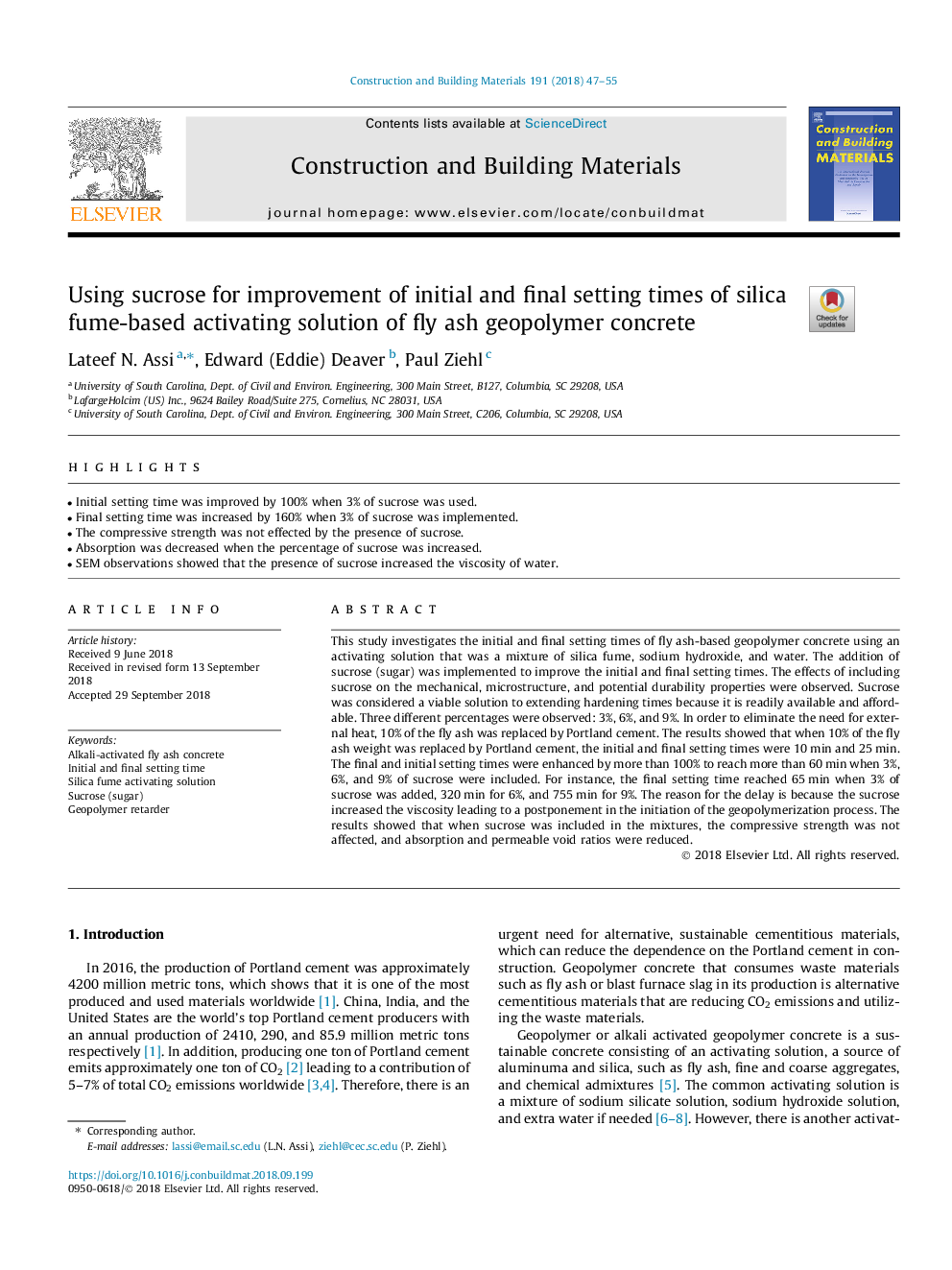| Article ID | Journal | Published Year | Pages | File Type |
|---|---|---|---|---|
| 11012608 | Construction and Building Materials | 2018 | 9 Pages |
Abstract
This study investigates the initial and final setting times of fly ash-based geopolymer concrete using an activating solution that was a mixture of silica fume, sodium hydroxide, and water. The addition of sucrose (sugar) was implemented to improve the initial and final setting times. The effects of including sucrose on the mechanical, microstructure, and potential durability properties were observed. Sucrose was considered a viable solution to extending hardening times because it is readily available and affordable. Three different percentages were observed: 3%, 6%, and 9%. In order to eliminate the need for external heat, 10% of the fly ash was replaced by Portland cement. The results showed that when 10% of the fly ash weight was replaced by Portland cement, the initial and final setting times were 10â¯min and 25â¯min. The final and initial setting times were enhanced by more than 100% to reach more than 60â¯min when 3%, 6%, and 9% of sucrose were included. For instance, the final setting time reached 65â¯min when 3% of sucrose was added, 320â¯min for 6%, and 755â¯min for 9%. The reason for the delay is because the sucrose increased the viscosity leading to a postponement in the initiation of the geopolymerization process. The results showed that when sucrose was included in the mixtures, the compressive strength was not affected, and absorption and permeable void ratios were reduced.
Related Topics
Physical Sciences and Engineering
Engineering
Civil and Structural Engineering
Authors
Lateef N. Assi, Edward (Eddie) Deaver, Paul Ziehl,
